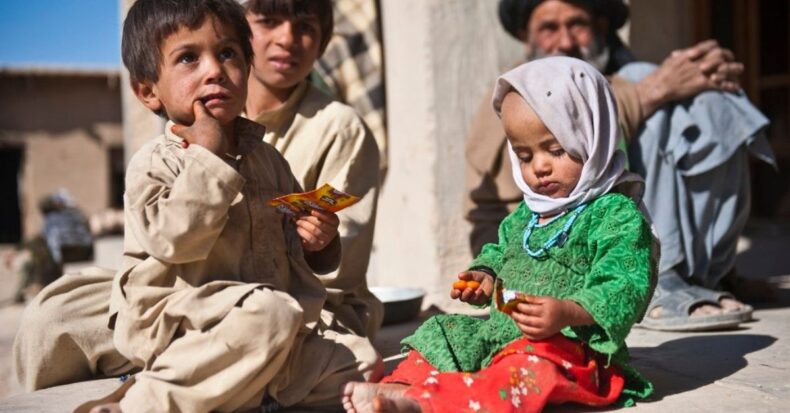Listed at the top of the emergencies list on the World Food Programme is the Afghanistan Food crisis and the immediate call to the action requested to prove the predictions wrong.
The reports released by the United Nations and the World Food Programme reveal that Afghanistan is about to face a severe food crisis, and millions of people will suffer from starvation if the global citizens contribute nothing.
Almost half the Afghan population, i.e., about 22.8 million people, suffer from acute food deprivation and a large proportion of children are malnutrition according to the WFP report.
Afghans dire Humanitarian crisis
Recently Afghanistan faced one of the worlds’ worst crises as the Taliban established their rule on the land right after the US military pulled out of the country after 20 years. The Taliban takeover massively disrupted well-being and harmony in the country by imposing fear and terrorism, and it has become a cause of global concern and political tensions worldwide.
The economy was already fragile, and the attack weakened it further. Afghanistan depends mainly on international aid, and the western countries and IMF halting payments placed a significant restriction on the country’s spending.
The world bank includes any country whose GDP has 10% international aid to be an ais-dependent country. In that context, Afghanistan has 40% of its GDP consisting of international assistance from global banks and governments.
Since these international organizations suspended payments in the wake of the terror attacks, Afghan is faced with a severe shortage of food. The country has even passed South Sudan, Yemen, Syria and Ethiopia to become a country with immediate needs to sustain itself.
The Food Crisis
8.7 million people in Afghanistan are at emergency levels. People have not been paid any salary for the past few months due to the Taliban restricting access to overseas assets. Rural communities and Urban populations are for the first time facing similar levels of devastation regarding food and financial shortages, stated WFP
The need to take action is urgent due to the onset of harsh winters, predicted to isolate a large population and further aggravate the food plight. The country has been in a freefall, and the systemic failure has created a new hungry class.
People are hunting garbage bins to find food due to extreme inflation rates and job loss. Winters are set to increase the droughts that have already ravaged a large part of food production in recent years.
The older population and children are at risk due to food shortage, with the highest mortality rates and more than 2 million children suffering from acute malnutrition. Breastfeeding and pregnant women are also in need of immediate help.
What are we doing to help?
A WFP food security specialist confirmed that WFP Afghanistan could feed 4 million people going on to 5 million people last month, which was a massive improvement from food distribution before.
But unfortunately, the funding for the sustenance of the drive is inadequate and is estimated to require an additional $220 million per month.
Climate oriented drawbacks are affecting the food crisis. People are out of jobs and do not have access to their savings, and rural areas do not have the cash to liquidate.
Amidst all this, politics is still the primary reason funds aren’t being allocated, and actions are delayed in times of need.
Agro meteorology has its parts to play in this crisis, termed the world’s worst food crisis. Still, overall, immediate action is needed to avoid any future catastrophes and loss of lives.
Voluntary contributions on an individual level are also of utmost importance, which is why WFP has set up donation drives and camps to tackle the problem at hand.












